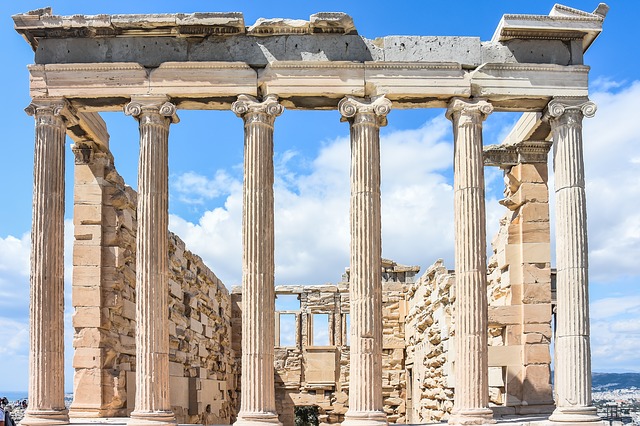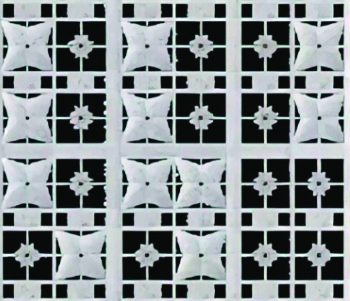Classical architecture
[edit] Introduction
Classical architecture refers to a style of buildings originally constructed by the Ancient Greeks and Romans, especially between the fifth century BCE in Greece and the third century CE in Rome. The style of classical architecture has been reproduced throughout architectural history whenever architects looked to the ancient past for illumination and inspiration, and in search of what they may have regarded as lost ideals.
The Renaissance is an obvious example, but so are the Greek revivals of the 19th century in Victorian Britain and other parts of Europe. Victorian architects sometimes created exact copies of classical forms but otherwise they adopted an eclectic approach that involved recombining classical forms and motifs to create a new style or typology. For example, a Greek temple could become the model for a church, a town hall or even a railway station.
In the US, the Classical Revival or Neoclassical Style (1895-1950) is one of the most common architectural styles. It was most often used for courthouses, banks, churches, schools and mansions. Later, Hitler’s architect Albert Speer designed his vision of the new post-War Berlin entirely in a pared-down, mostly unadorned neoclassical style.
[edit] Characteristics of classical architecture
Classical buildings in ancient Greek and Roman times were typically built from marble or some other attractive, durable stone, but since then, they have also been built in brick, concrete and stone. The architecture was primarily trabeated (post and beam) and evolved from timber origins.
Greek architecture followed a highly-structured system of proportions that related individual architectural components to the whole building. This system was developed according to three basic styles, or 'orders' – Doric, Ionic and Corinthian – that formed the heart of classical Greek architecture. The Romans also used these widely but added two of their own orders: Tuscan and Composite.
For further information see Classical Orders in Architecture.
[edit] Related articles on Designing Buildings
- Architectural history.
- Architectural Styles.
- Baroque architecture.
- Classical orders in architecture.
- Classical Revival style.
- Elements of classical columns.
- Italian rationalism.
- Italian Renaissance Revival style.
- Jacobean architecture.
- Neoclassical architecture.
- Nineteenth century building types.
- Palladian architecture.
- Origins of Classical Architecture.
- Rinceau.
- Roman Classical orders in architecture.
- Sir Christopher Wren.
- Xystus.
Featured articles and news
Deputy editor of AT, Tim Fraser, discusses the newly formed society with its current chair, Chris Halligan MCIAT.
Barratt Lo-E passivhaus standard homes planned enmasse
With an initial 728 Lo-E homes across two sites and many more planned for the future.
Government urged to uphold Warm Homes commitment
ECA and industry bodies write to Government concerning its 13.2 billion Warm Homes manifesto commitment.
Places of Worship in Britain and Ireland, 1929-1990. Book review.
The emancipation of women in art.
CIOB Construction Manager of the Year 2025
Just one of the winners at the CIOB Awards 2025.
Call for independent National Grenfell oversight mechanism
MHCLG share findings of Building Safety Inquiry in letter to Secretary of State and Minister for Building Safety.
The Architectural Technology Awards
AT Awards now open for this the sixth decade of CIAT.
50th Golden anniversary ECA Edmundson awards
Deadline for submissions Friday 30 May 2025.
The benefits of precast, off-site foundation systems
Top ten benefits of this notable innovation.
Encouraging individuals to take action saving water at home, work, and in their communities.
Takes a community to support mental health and wellbeing
The why of becoming a Mental Health Instructor explained.
Mental health awareness week 13-18 May
The theme is communities, they can provide a sense of belonging, safety, support in hard times, and a sense purpose.
Mental health support on the rise but workers still struggling
CIOB Understanding Mental Health in the Built Environment 2025 shows.
Design and construction material libraries
Material, sample, product or detail libraries a key component of any architectural design practice.
Construction Products Reform Green Paper and Consultation
Still time to respond as consultation closes on 21 May 2025.
Resilient façade systems for smog reduction in Shanghai
A technical approach using computer simulation and analysis of solar radiation, wind patterns, and ventilation.


























Comments
Classical architecture is always stunning and beautiful. It has its own uniqueness. This article explains classical architecture in a simple way. Glad to have found it.